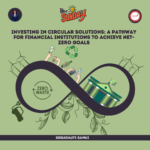Union Budget 2017 is the most looked forward issue for everybody associating with the Indian economy. This year budget will be announced one month earlier compared to the traditional practice of declaring it on the last day of February, because, Government wants to complete the spending and tax proposal before starting of new financial year.
Here are the major expectations from NDA’s budget:
- Change in Tax Administration:
Data shows that only 1% of the Indian population pays income tax, whereas only around 2% filed income tax return. So, to take more people into taxpayers’ net, Government might increase the tax level from Rs. 2.5 lakh per annum to Rs. 4 lakh per annum. Along with that corporate tax may get reduced to boost economy. Also, according to the CEO of Mindtree, Rostow Ravanan, Government needs to streamline and update the process of incentives given to individual taxpayers to have more inclusion. GST’s implementation schedule may also be announced in this budget.
- Encouraging Digital Payments and Proper Implementation:
In the process of creating a supposedly cash-less economy, this budget is expected to incentivize digital payments via plastic money. In a country of 1300 million, banking penetration is only 55% (although 19% of them are dormant), which translates to people having 700 million debit cards but only 24.5 million credit cards. So, the budget is expected to address the huge opportunity. To promote cashless transaction, applications are expected to be part of this budget. Benefits of banking through payment banks are also expected. Infrastructures are expected to be more developed to incorporate SMEs in digital India.
- Real Estate:
Due to demonetisation and Real Estate Regulatory Act, 2016 was not smooth for major GDP contributors of India’s real estate sector, because, cash crunch made problem for buying material, construction etc. Relaxation in income tax rate, hike in HRA deduction is expected from this budget.
- Revival of Private Investment:
The government is expected to take major steps to address the issue to decreasing private investment. Demonetisation may not affect the private investment directly, but it has kept the investment in abeyance, which will delay the recovery in private investment. So, domestic consumption, purchasing power and cash-driven transaction in the rural economy need to be boosted by the policies taken by the Government in this budget.
- Agriculture:
Farmers were not able to sell their khariff crops due to unavailability of notes after demonetisation. So, they are expected to get some benefit from this budget under Pradhan Mantri Fasal Bima Yojana. It is also expected to provide a measure for cashless transactions and digital payments in the farming sector so that seeds, fertilizers, and other necessary equipment can be easily be purchased by farmers. Also, import duty on vegetable oil needs to be increased to help domestic refining industry, which is currently facing a crisis of under-utilization. The government can also think of introducing FDI in the agriculture sector to boost the investments and technical expertise. The budget is expected to introduce a framework for more transparent procurement of grains by official agencies. It may include the system of direct procurement from farmer to prevent exploitation by placing suitable safeguards.
- Housing Loan:
The government announced Pradhan Mantri Awas Yojna (PMAY) aiming for housing for all. Then, it is expected that government would increase the tax deduction on the interest paid on housing loan. An extra benefit is expected beyond the interest payment of Rs. 2 lakhs per annum.
- Social Sector:
Gross enrolment ratio in India is only 23%, which is well below the world average. So, to address that, the government is expected to have more allocation (more than 3% of GDP) in the education sector. Increasing the internet coverage would be an effective step to address this gap to educate the students of rural India. Along with that, the learning gap between academic curriculum and practical arena needs to be addressed by imparting more technology and collaboration in between educational institutes and industries.
This budget may announce a new cess for social security of around 20000 railway coolies. It is expected that every railway ticket would cost 10 paise more to generate around Rs. 4.4 Crores per year to provide the basic minimum facilities like PF, pension etc. for the coolies.
- Railway:
Ending the 92 years-old tradition, the Government decided to merge railway budget with the union budget. Railways is expected to get around . 1.3-1.4 Trillion rupees this year to spend in building over-bridges, under-bridges, track renewal, freight corridors etc.
At last, the share of India in global GDP has increased from 4.8% in 2001-07 to 7.0% in 2014-15 according to the Economic Survey 2016. So, it is very critical for the finance ministry to make a roadmap to achieve the country’s goal – to be a global economic power with sustainable growth rate.
 Roopteja Tamatam, a student of Shailesh J. Mehta School of Management, IIT Bombay, is a finance enthusiast and an avid follower of western classical music and is looking to carve a unique career path amalgamating both of his passions.
Roopteja Tamatam, a student of Shailesh J. Mehta School of Management, IIT Bombay, is a finance enthusiast and an avid follower of western classical music and is looking to carve a unique career path amalgamating both of his passions.
 Sayan Poria, a student of Shailesh J. Mehta School of Management, IIT Bombay, is a finance enthusiast, opinionated and avid follower of recent political and socio-economical affairs.
Sayan Poria, a student of Shailesh J. Mehta School of Management, IIT Bombay, is a finance enthusiast, opinionated and avid follower of recent political and socio-economical affairs.














Leave a comment